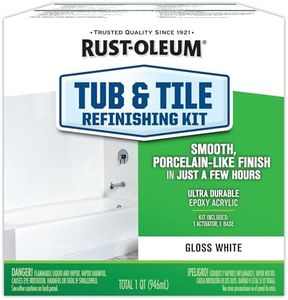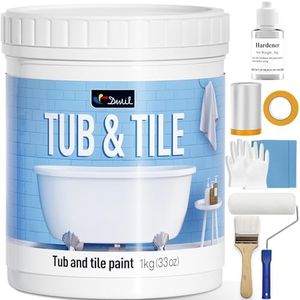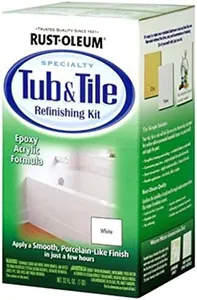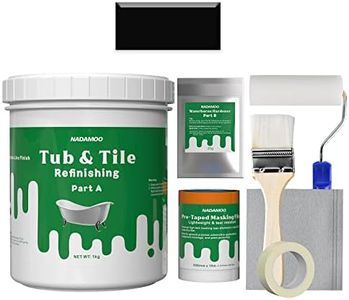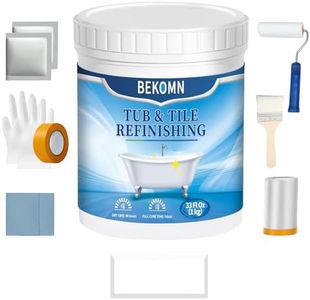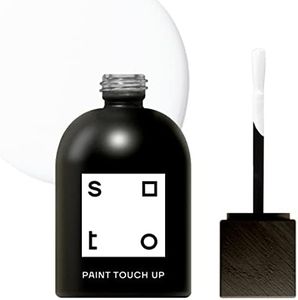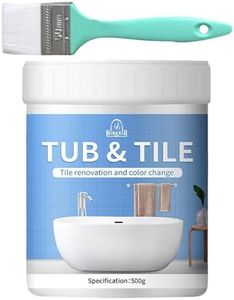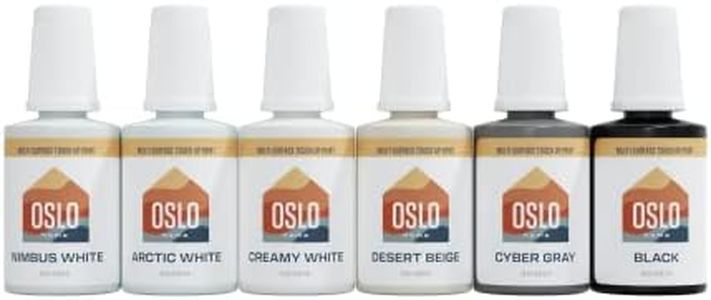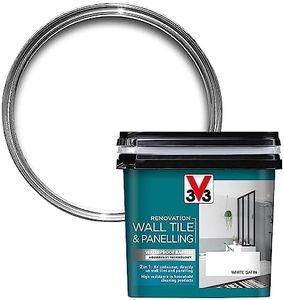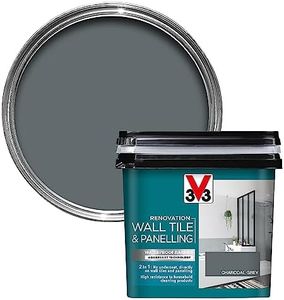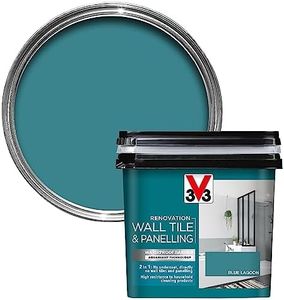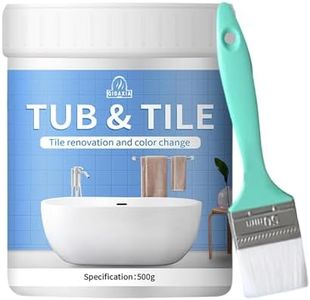We Use CookiesWe use cookies to enhance the security, performance,
functionality and for analytical and promotional activities. By continuing to browse this site you
are agreeing to our privacy policy
10 Best Paint For Bathroom Tiles
From leading brands and best sellers available on the web.Buying Guide for the Best Paint For Bathroom Tiles
Choosing the right paint for bathroom tiles can help refresh your space and protect surfaces against moisture and mildew. Since bathrooms are high-humidity areas, it’s important to select a paint that will adhere well to tiles and resist peeling, staining, and mold growth. Knowing what features to look for helps ensure a long-lasting and attractive finish, making your bathroom renovation more successful and less prone to issues over time.Paint TypePaint type refers to the base or formulation of the paint, such as epoxy, latex, or acrylic. This is important because different types have varying degrees of adhesion, durability, and resistance to moisture. Epoxy paints are known for their superior adhesion, durability, and water resistance, making them ideal for tiles exposed to frequent moisture. Acrylic and latex options are easier to apply and dry quickly but may require an additional sealing coat to achieve comparable performance. When choosing, consider how much water exposure your tiles will have: epoxy for high-moisture areas like shower walls, and high-quality acrylic or latex for drier areas or decorative tiles.
Finish (Sheen Level)The finish or sheen level describes how glossy or matte the painted surface will appear, and it affects both aesthetics and functionality. Finishes like high-gloss and semi-gloss are especially good for bathrooms because they repel water and are easy to clean, which helps prevent mold and stains. Matte or eggshell finishes are less reflective and hide imperfections but may be harder to wipe clean. For most bathroom tiles, a semi-gloss or gloss finish is best for balancing appearance and ease of maintenance. Choose a finish based on whether you want a shiny, modern look or a softer, more muted surface, while also considering how often the area will need cleaning.
Mildew and Mold ResistanceMildew and mold resistance refers to the paint’s ability to prevent fungal growth, which is crucial in damp bathroom environments. Some paints include antimicrobial additives to inhibit these issues, reducing the risk of unsightly stains and unpleasant odors. This feature is especially important for areas with poor ventilation or where water splashes regularly. To choose the right paint, look for labels indicating mold or mildew resistance, particularly for tiles near showers, bathtubs, or sinks. This will help maintain a healthy and attractive bathroom longer.
Adhesion and Tile CompatibilityAdhesion measures how well the paint sticks to the tile surface, which is essential for durability and avoiding peeling or chipping. Not all paints are designed for smooth, non-porous surfaces like ceramic or porcelain tiles. Some options are specially formulated to bond with slick tile surfaces, while others may require a primer beforehand. Check the paint label for compatibility with your tile type. If your tiles are glossy or particularly smooth, a primer may be recommended to help the paint adhere better. Assess your tile material and follow all recommended preparation steps to ensure long-lasting results.
Drying Time and Re-coat TimeDrying time is how long the paint needs to set before it’s dry to the touch, while re-coat time is when you can apply another layer. Some paints dry quickly for convenience, while others need more time for proper curing to achieve full strength and resistance. Faster drying paints are suitable for smaller projects or when bathroom downtime is limited, but sometimes slower-drying, high-performance options (such as epoxies) offer the most reliable finish. Consider your renovation schedule and how quickly you need to use your bathroom again when selecting paint with a suitable drying profile.
